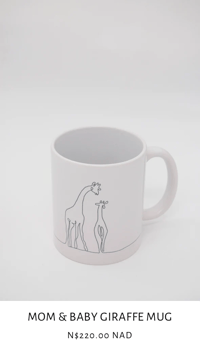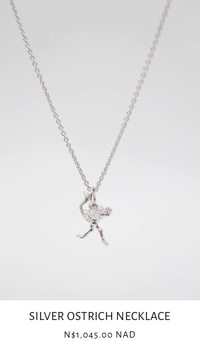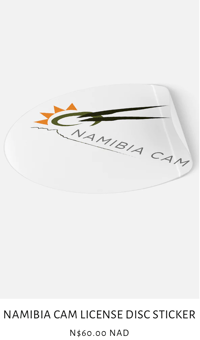OKAUKUEJO LIVE STREAM
Immerse yourself in Untamed!
Embark on a journey unlike any other as we transport you straight to the heart of Etosha National Park, where the magic of Namibia's wilderness unfolds before your very eyes, 24/7. Our live webcam serves as your exclusive portal to the legendary Okaukuejo Waterhole, a beacon of life in the arid landscapes of the park. Witness nature's drama unfold under the vast Namibian sky, bathed in the gentle glow of floodlights. From the iconic presence of elephants to the elegant grace of giraffes, from the playful antics of zebras to the stealthy prowling of lions, the Okaukuejo Waterhole teems with a breathtaking array of wildlife, particularly during the parched months when water is scarce. Whether it's the hustle and bustle of daytime activities or the enigmatic allure of nocturnal encounters under the moonlit sky, there's always something extraordinary to discover at the Okaukuejo Waterhole.
Okaukuejo and the Etosha National Park
The establishment of Okaukuejo as the administrative center and research hub further underscores the commitment to understanding and conserving the park's ecosystem. The presence of the Etosha Ecological Institute emphasizes the importance of scientific research in shaping conservation strategies and park management.
The conversion of Okaukuejo into a rest camp not only provides visitors with a comfortable base for exploring Etosha but also serves as a gateway to experiencing the park's natural wonders. The flood-lit waterhole offers a unique opportunity for visitors to observe wildlife up close while respecting their natural habitat. The accessibility of the waterhole, whether in person or through digital platforms like the NamibiaCam YouTube channel, promotes appreciation and understanding of Etosha's biodiversity while ensuring the safety of both wildlife and visitors.
In conclusion, the journey of Etosha National Park reflects a broader global shift towards valuing and conserving natural heritage, and destinations like Okaukuejo play a crucial role in facilitating this ongoing conservation effort.
Sustainability Efforts
Okaukuejo serves as the administrative hub of Etosha National Park and is home to the Etosha Ecological Institute. This institute is tasked with conserving the diverse fauna and flora found in this region of Namibia.
Etosha offers a plethora of research opportunities, with a diverse array of scientific investigations conducted here. Topics range from elephants to biting flies, and from giraffes to flamingos. Additionally, the park presents fascinating avenues for research across various earth sciences, including the evolution of Etosha Pan, its paleo-ecological significance, and the impact of its dust emissions on climate.
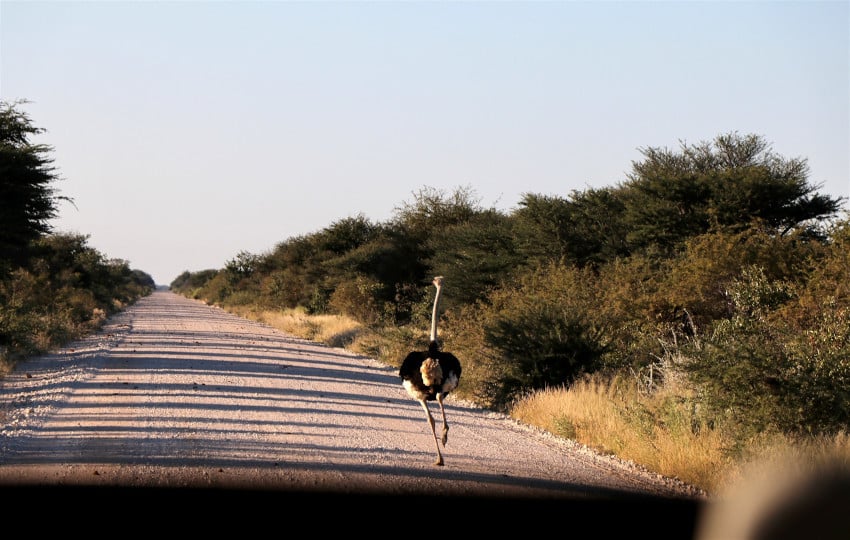
The Etosha Pan
Animals in the area
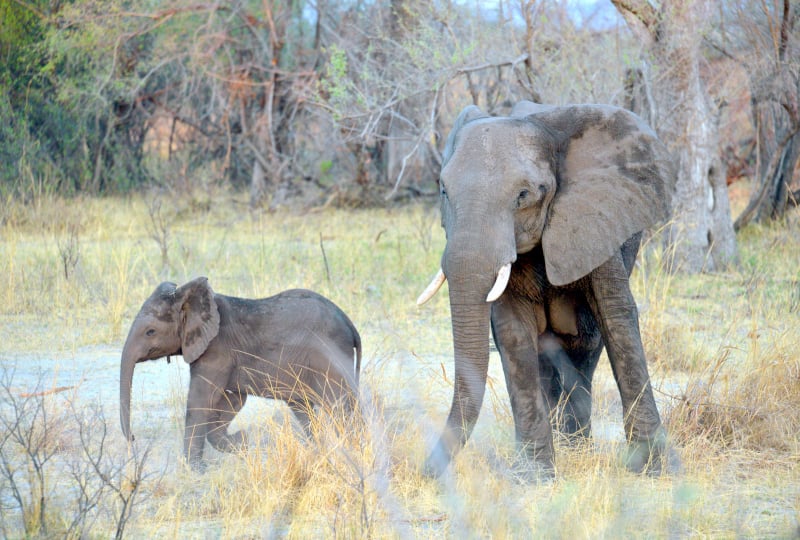
Elephant
The elephant (Loxodonta africana) is the world's largest land mammal. All the elephants found in Namibia are African elephants which live in small families of between 10 and 20 animals. These groups frequently congregate in larger herds at communal waterholes, led by dominant females (matriarchs). Males can be identified with a rounded rather than angular foreheads and thicker tusks. The flaps of the ears are very large, reaching a height of 2m and a breadth of 1.2m.
/23-06-16%20rhinoceros%20black%20gemsbokvlakte%20etosha%20-%20wikipedia%2012-01%20cut%20web%20850%20x%20567.jpg)
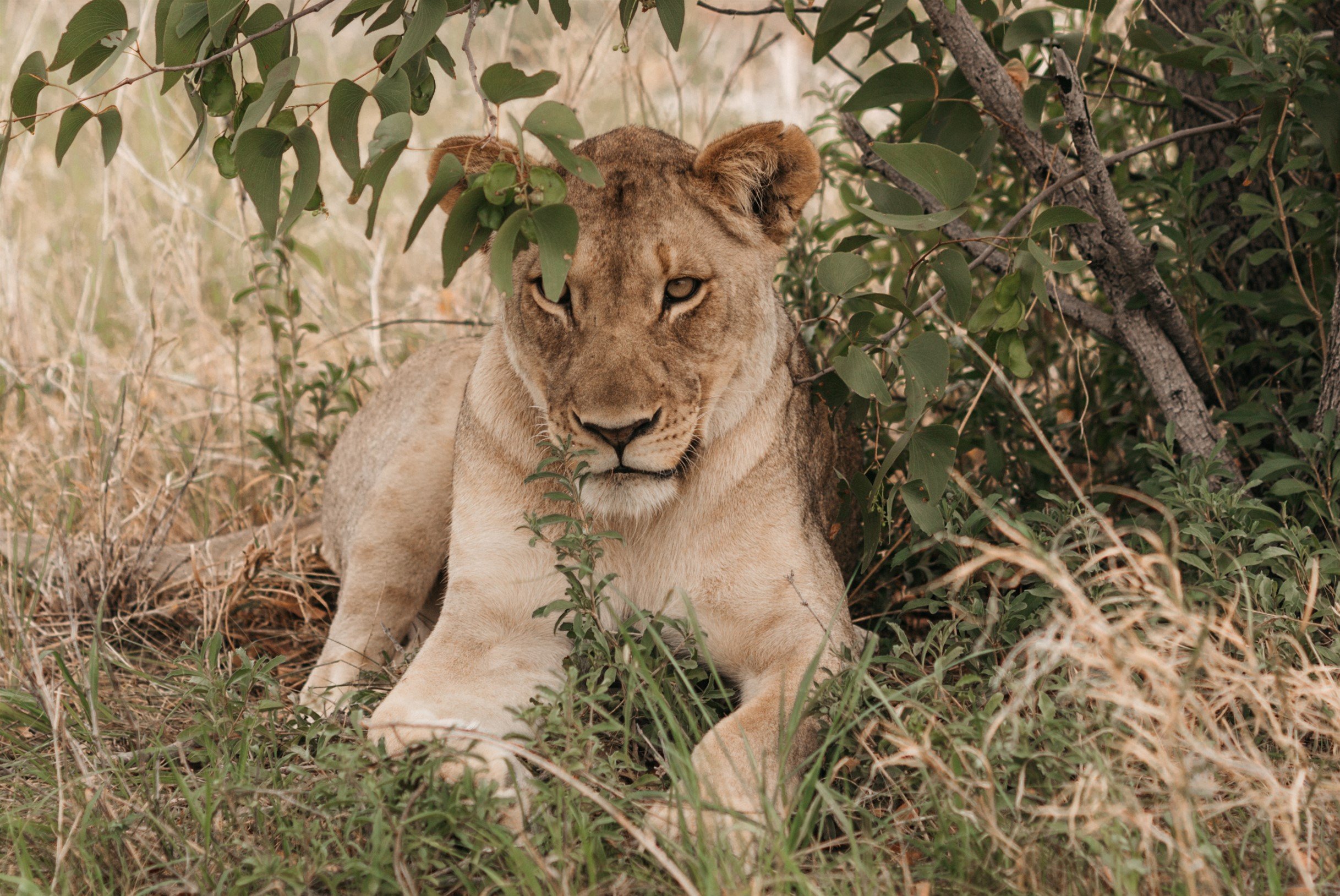
Lions
Lions are great wanderers and spend much of their time hunting, patrolling territories, playing and sleeping. Although they live in prides of up to 30, comprising between 4 and 12 related females, it is the lionesses that remain in the pride for life. The males form coalitions, defending their female from rival males. Lions are territorial animals and can defend a territory of up to 400km².
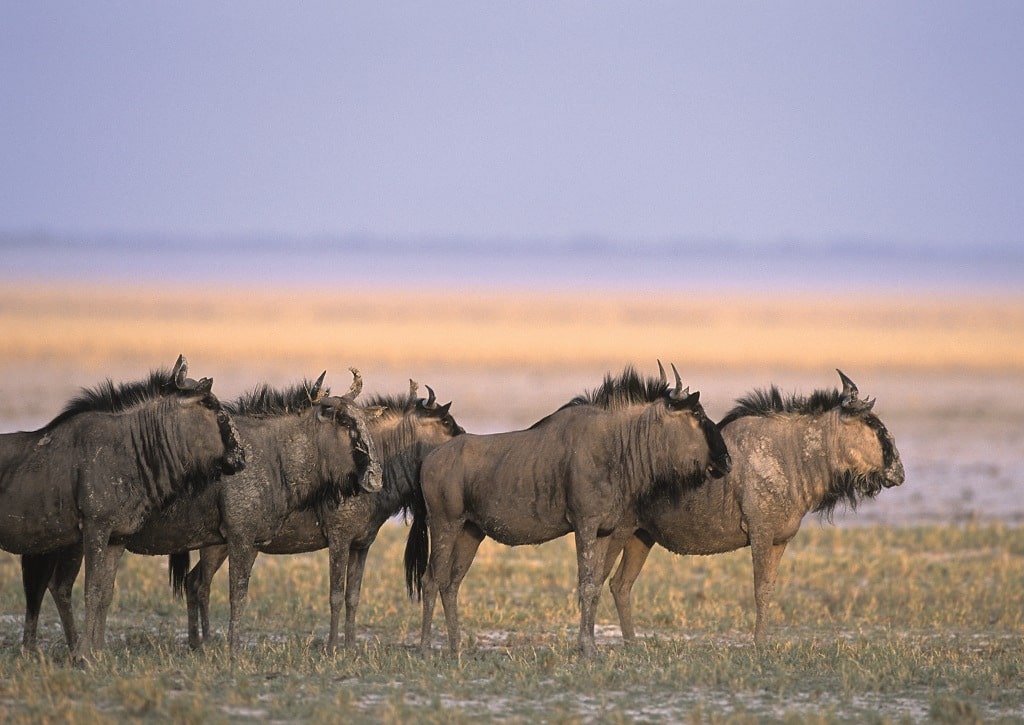
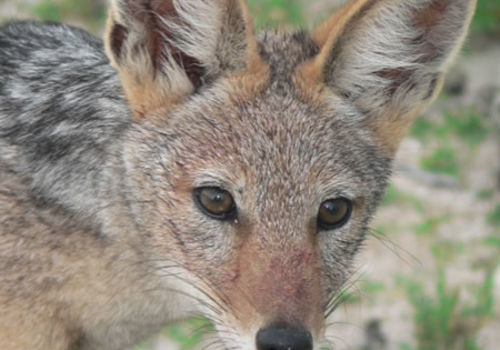
Black Backed Jackal
The Black-backed Jackal (Canis mesomelas) is a medium sized and dog-looking, with black fur that is sprinkled with white fur on its back which is wider at the neck and shoulders and thins out towards the tail. Almost like a saddle. It has white fur around the lips and down the throat and chest.
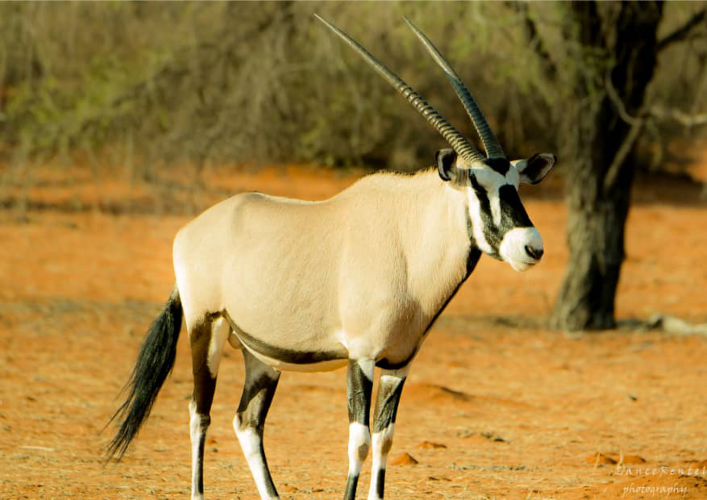
Oryx
Gemsbok (Oryx gazella) is the common name for the most well known and largest of the 3 oryx species. Their coat is a light brown/grey color and the top of their legs are black. They have a dark strip extending from their chin, down their neck and also along their shoulder joints. The face has black and white facial markings, which makes them easily identifiable.
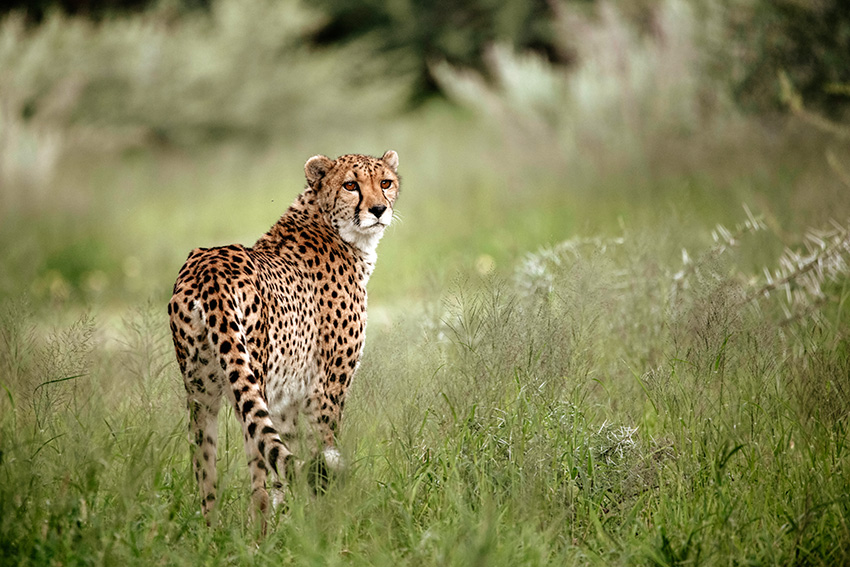
Cheetah
The Cheetah’s (Acinonyx jubatus) slim body, long legs, small tail and long tail is built for speed and they can reach a speed of 120km/h. The body is covered in black spots with the last third of the tail having black rings. A distinguishing marker are the “tear tracks” that run from the corner of the eye past the side of its mouth.
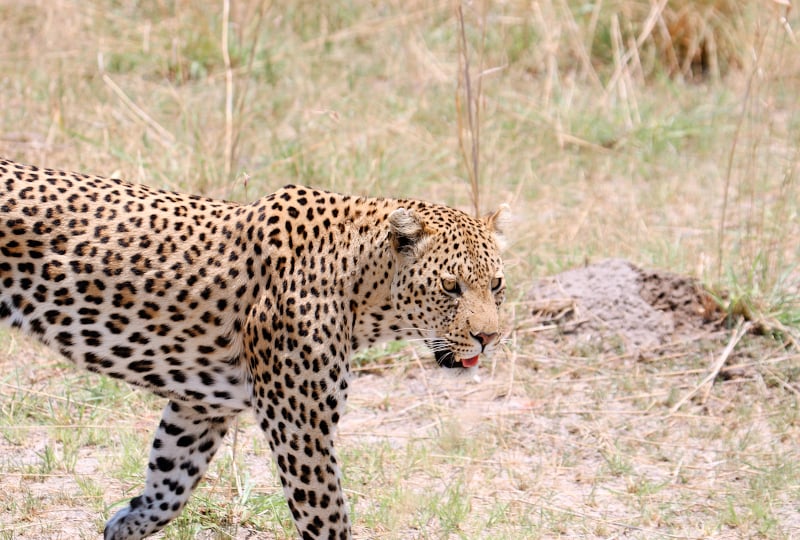
Leopard
Leopards (Panthera pardus) are solitary animals, except during the mating season or when females are accompanied by juveniles. They are primarily nocturnal creatures but have been seen in the daytime, particularly in national parks and in remote area. As they are very secretive animals, making contact is difficult. Approaching luxury tented campsites they can be recognised by their repeated hoarse rasping cough.
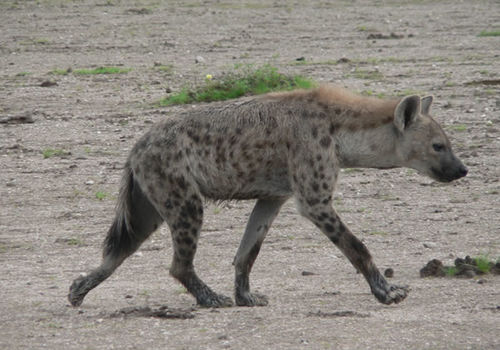
Spotted Hyena
Although hyena have a reputation of being scavengers, they are very efficient hunters with very powerful jaws. This is perhaps best appreciated when an individual is seen running from a kill carrying the hind leg of a wildebeest or other heavy section of a carcass, high off the ground. Adult hyenas can run at speeds of up to 60km/hr. Female hyena are larger than males and clans of hyena are led by dominant females.
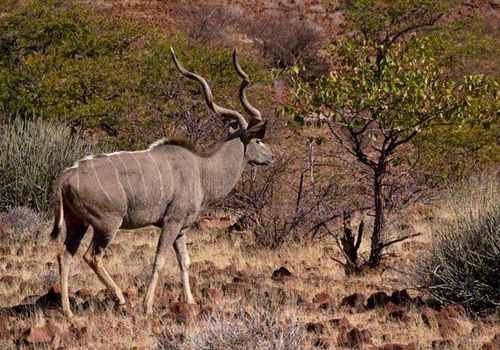
Kudu
The greater kudu (Tragelaphus strepsiceros) is found throughout central & northern Namibia and is the second tallest antelope on the African continent. Kudu bulls bear long, spiral horns which reach record lengths of up to 1.8m. Horns grow to their full length at the age of six years. Kudu live in small herds not usually larger than twelve, comprising of females and their young. During the breeding season, the herds are occasionally joined by the normally solitary males.
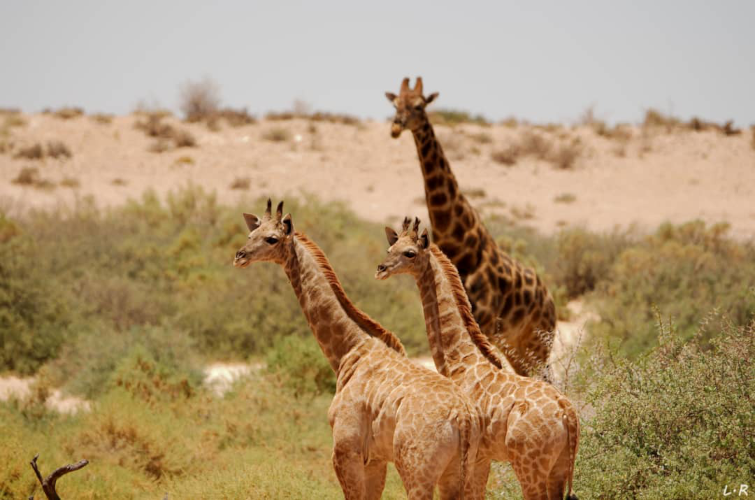
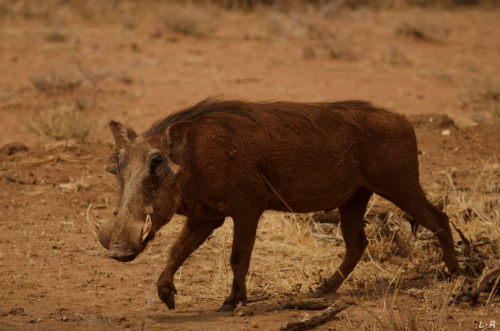
Warthog
The warthog is an African pig with large curved tusks protruding from its huge flattened head, one set from both upper and lower jaws. It gets it name from the gristly warts that protrude from the sides of its face. Boars have two pairs, sows only one. It is not known for certain what purpose the warts serve. One explanation is that they are used as a weapon, or, alternatively, as a defence in fending off blows from other warthogs.
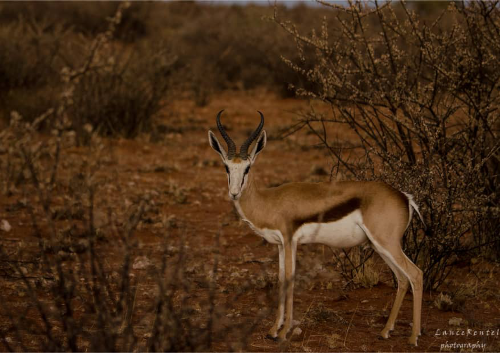
Springbok
The Springbok (Antidorcas marsupialis) can reach a top speed of up to 88km/h, putting it on the list of the top ten fastest land animals. Its speed allows it to outrun (most of the time) any predator. However, the Springbok is not only known for its speed, but especially for its unique method of jumping up to 4 meters into the air.
.jpg)
Common Impala
Impala (Aepyceros melampus) favour woodlands, sheltering an undergrowth of grass or shrubs. They are seldom far away from water, hence their Namibian distribution patterns. They are very common in their range and a characteristic of impala is the attendance of red-billed oxpeckers busily cleaning and generally keeping impala free from ectoparasites, although they do self-groom with their lower incisors to remove ticks.
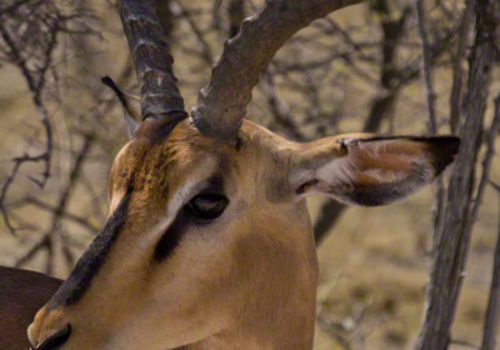
Black-Faced Impala
The black-faced impala (Aepyceros melampus petersi) is a sub-spieces of the common impala originally from the north west of Namibia, introduced to Etosha National Park in the 1970's. They are darker than other impala and are so called due to their characteristic black face. They are gregarious creatures and occur in small herds of between 3 and 15 and in larger herds during the lambing season. Solitary males team up with harems of females and their offspring.
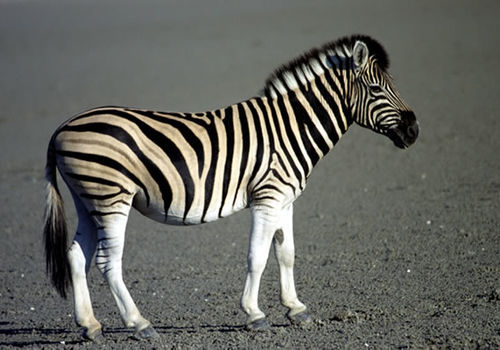
Burchell’s Plains Zebra
Burchell's zebra (Equus burchelli) is a horse-like herbivore which was named after the well-known traveller and naturalist, W.J. Burchell. They inhabit savannah, from treeless grasslands to open woodlands. Zebras stay in family groups of a stallion, or male and several mares, but different families will come together in huge herds of hundreds of zebras. They are distinguished from Hartmann's mountain zebra by:
1. The yellowish or greyish shadow stripes between the black on the hind quarters.
2. The lack of 'gridiron' pattern on the top of the hind quarters.
3. The absence of dewlap (the loose fold of skin hanging under the throat) .
Each zebra has an individual stripe pattern and with no two being alike. Herds will mingle with wildebeests, ostriches and antelope while they graze and even come to depend on them as additional protection against predators!
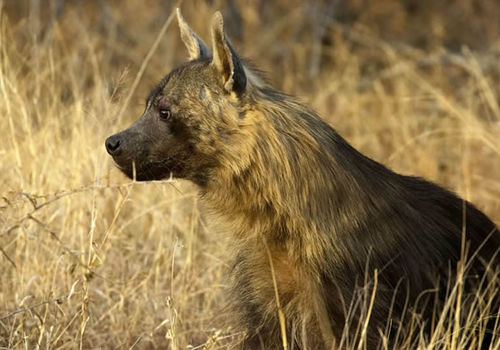
Brown Hyena
The brown hyena (Hyaena brunnea) is the mammal famous for its weird howl, which resembles a hysterical human laugh. The name is descriptive of their general dark brown colour. It has a typical hyena profile of appearing higher at the shoulders than at the rump. It has a massive head, neck and shoulders, the extra weight being borne by larger fore feet than the hind. They have powerful jaws and strong teeth that enable them to crush and eat even large bones. They are poor killers, confining their kill to small prey - even occasional attempts at springbok are generally unsuccessful. It is highly unlikely that they could tackle prey the size of kudu, waterbuck or zebra. Individuals are known to kill sheep, goats and calves.
The Camera is located at the Okaukuejo Waterhole. The Waterhole is situated at the Okaukuejo Rest Camp within the Etosha National Park in North-Central Namiba.
Have a look at our Animals in the area section.
Okaukuejo waterhole is famous for its game vieweing. Predetors that can be seen, include, Lions, Cheetah, Leopard, Spotted and Brown Hyenas.
Okaukuejo offers diverse animal sightings, Animals to be seen includer, Rhino, Giraffe, Elephant and Lion
The Etosha National Park is home to the Etosha Pan, a dried-up Lake. These rocks have their origin in the limestone (calcium carbonate), which is formed by the evaporation of groundwater, bringing carbonatesand saltes derived from the underlying rock strata and sediments to the surface.
Look no further than the Gondwana Travel Centre to help you out. We specialise in finding the perfect options tailored to your perfect Namibian adventure. Let us take the hassle out of your accommodation search, so you can focus on enjoying your trip to the fullest. Get in touch with us today to start planning your dream getaway!
Send your request to: adminnamcam@gcnam.com today!
Want to travel to Namibia or find out more!
Accommodation in the area
At sunrise the gates open to the 'Great White Place' or 'Place of Dry Water', as the Owambo people have called the heart of the country since time immemorial. Unlike its name, however, the 22 912-square-kilometre national park is a place of sanctuary and abundance.
At the end of a full Etosha day, while some are still racing the sun, others are lounging on the sundowner deck of Gondwana’s Etosha Safari Lodge or Etosha King Nehale or enjoying a drink at the Oshebeena Bar at Etosha Safari Camp, contemplating Etosha marvels and the thrill of being in the African wilderness.
Etosha Safari Lodge and Camp are a mere 10km form the Andersson Gate at Okaukuejo. Etosha King Nehale is just outside of the King Nehale Gate, north of Namutoni.
We are unique. We are passionate. We are Namibian. Most importantly we are Gondwana.


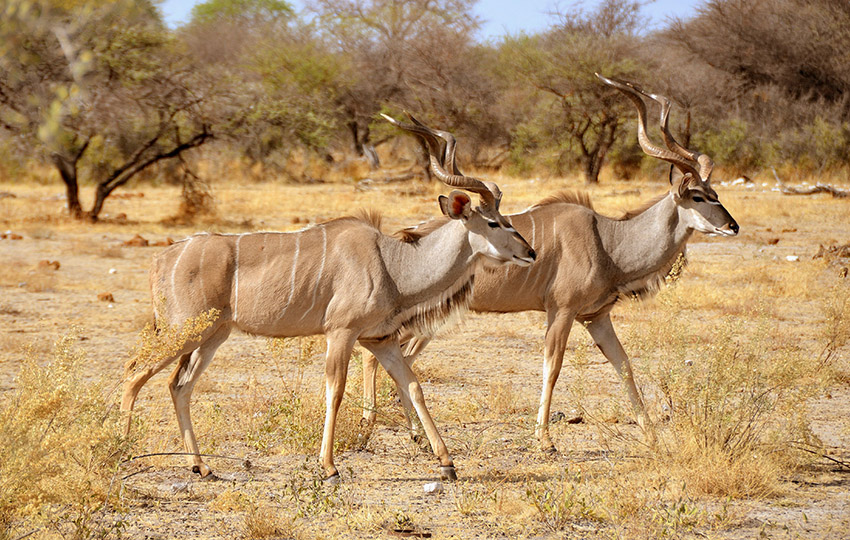
.jpg)
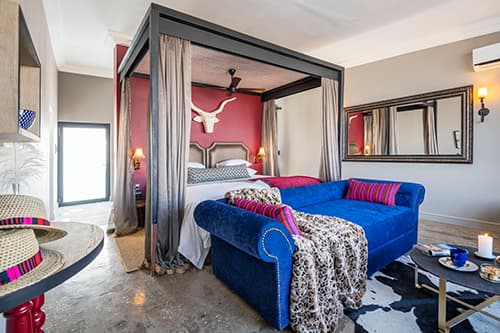
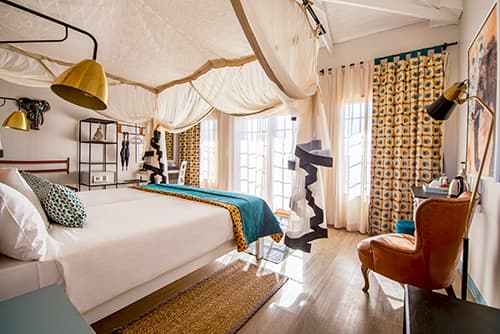
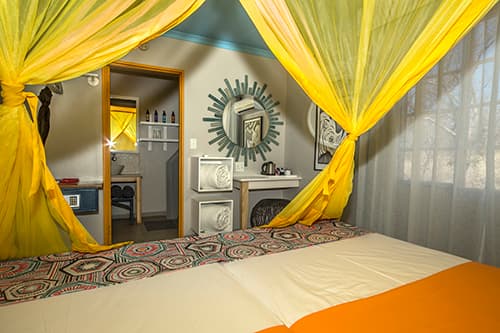
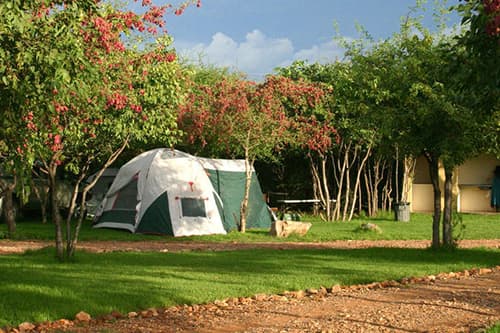
.jpg)

